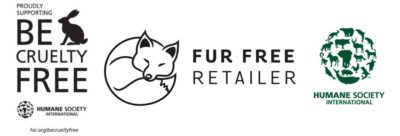No animals should be harmed in the making of our products and we are committed to improving animal welfare across our supply chain.
Animal welfare
Our Approach
We only source animal fibres from certified farms, and where possible, from recycled sources where quality and availability allows. We are also exploring alternative materials that can offer the same qualities as those from animals.
None of our beauty products are tested on animals and we have strict requirements in place for materials of animal origin, such as wool and down. We say a big no to fur, and for many years we have banned the use of exotic skin, as well as any material deriving from endangered species. We have not used angora wool since 2013. and since 2020, we only source mohair from farms certified to the Responsible Mohair Standard.
Since January 2025, we source all our animal fibres from certified farms, or where possible, from recycled materials:
- Virgin wool is sourced from farms certified to the Responsible Wool Standard.
- Virgin cashmere is sourced from farms certified to the Good Cashmere Standard.
- Alpaca wool is sourced from farms certified to the Responsible Alpaca Standard.
- All mohair is sourced from farms certified to the Responsible Mohair Standard.
- All down and feathers are sourced from recycled, post-consumer sources.
Working Together for Change
To raise the level of animal welfare, we team up with different stakeholders. Through our work with industry experts, we support research, development and implementation of animal welfare standards and transparency for wool, cashmere, leather and down.
We support organisations such as Textile Exchange and campaigns like Humane Society International‘s Be Cruelty Free, which aim to improve animal welfare and achieve a global ban on animal testing for beauty products. We believe animals have the right to fair treatment and have their basic needs fulfilled.

Animal Welfare Policy
Learn more about our animal welfare policy